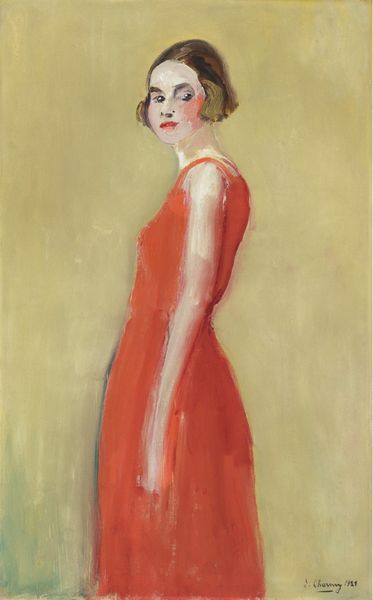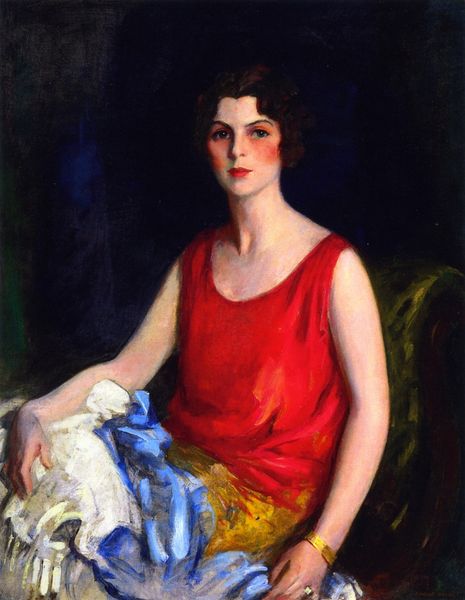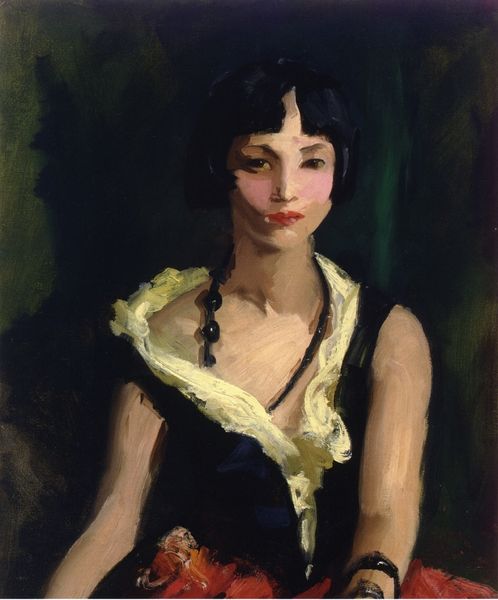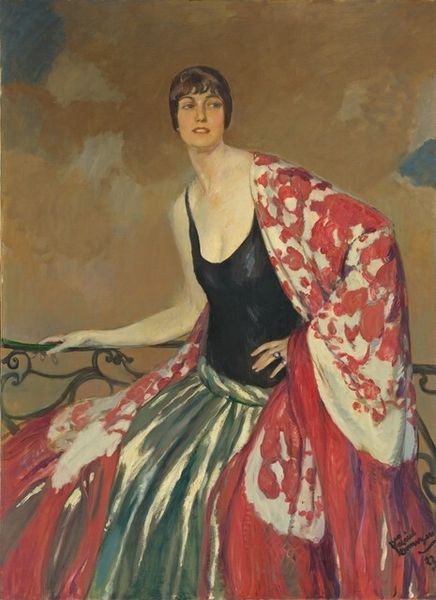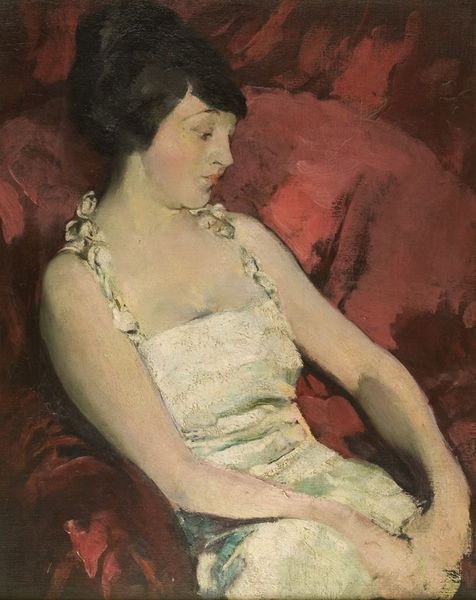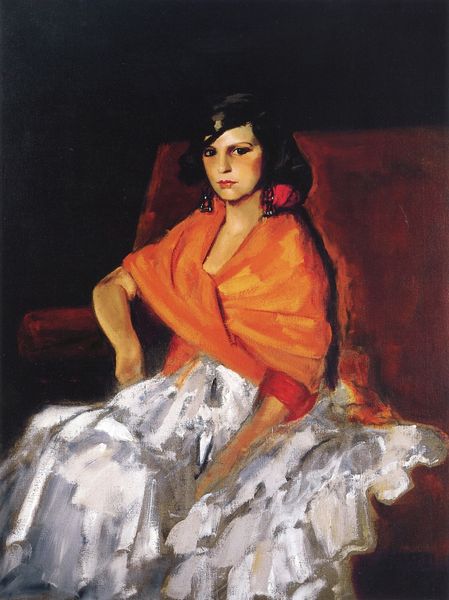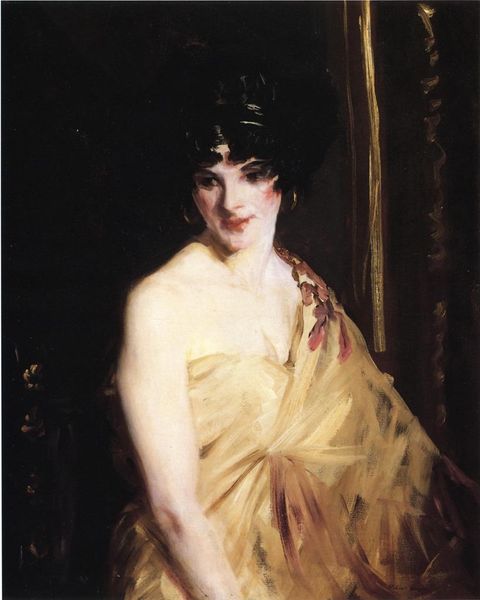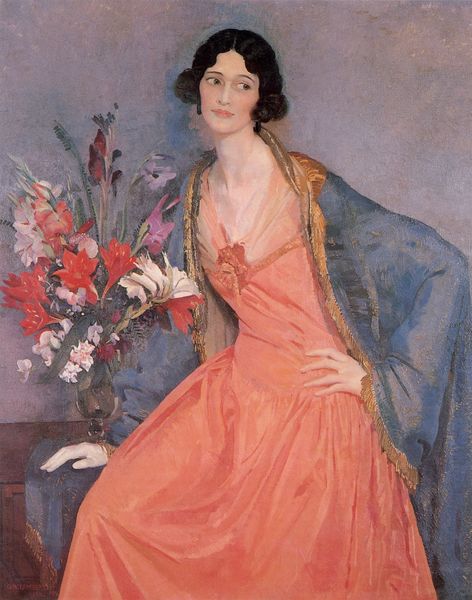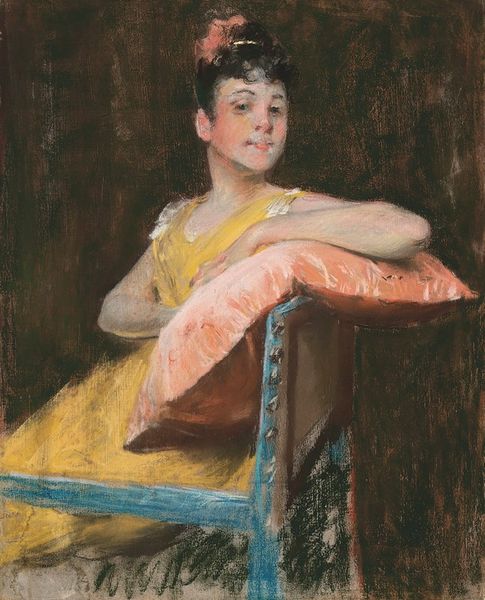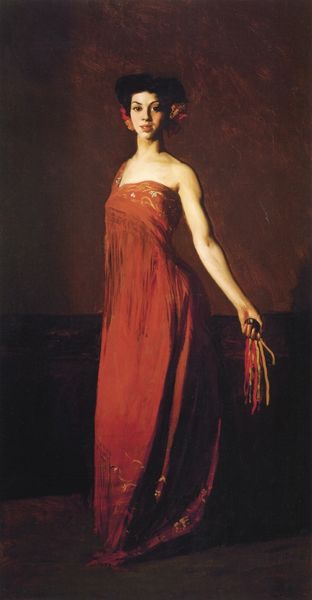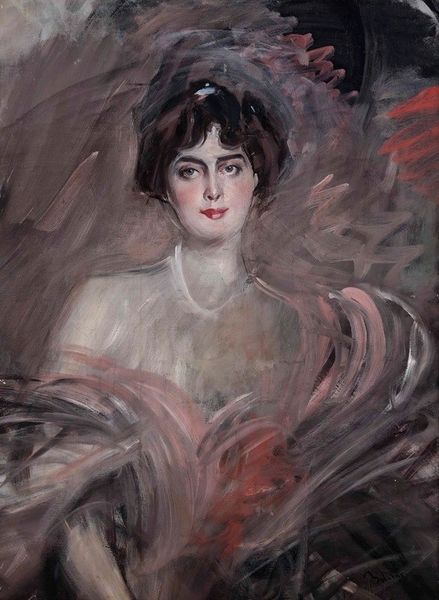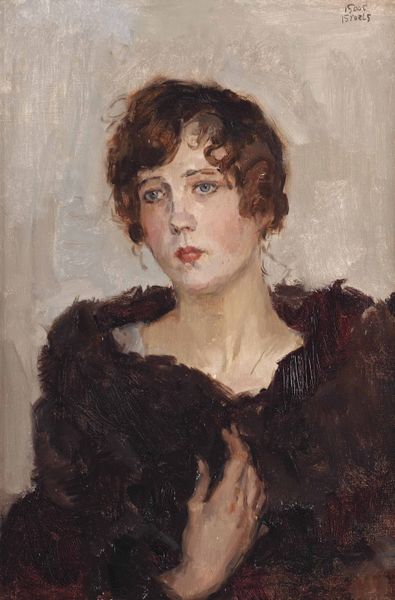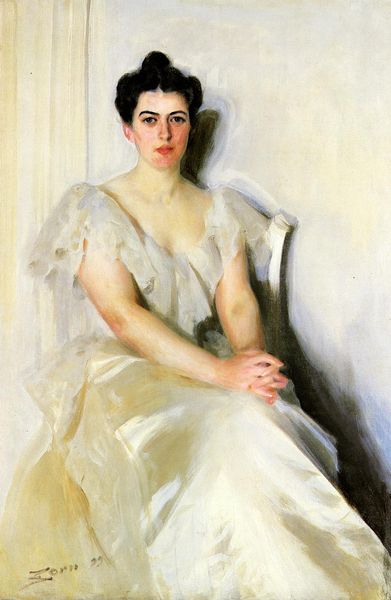
Copyright: Public domain
Editor: Here we have Robert Henri's "The Little Dancer" from 1918, created with oil paint. The way the red pops against the darker background is really striking to me. The brushstrokes seem so loose and expressive. How do you interpret this work from a formalist perspective? Curator: Focusing purely on the intrinsic qualities, we observe a compelling interplay of color and form. Note the strategic placement of the figure within the compositional frame, the way her gaze directs our own. Consider the contrast of textures: the smoothness of her skin juxtaposed against the rough, almost chaotic background. Henri's brushwork, indeed, serves a crucial purpose, contributing to the overall dynamism of the painting. Do you see how the limited palette enhances the figure's presence? Editor: I do see that now. The red dress really becomes the focal point. Are there other aspects of the composition that contribute to this effect? Curator: Absolutely. Observe how the diagonals created by her posture, and the fall of light across her form create tension. And consider the shapes themselves – the rounded contours of her body contrasted against the more angular background. The relationship between figure and ground becomes paramount in creating visual interest. Ultimately, "The Little Dancer" achieves its effect through a sophisticated orchestration of purely formal elements. Editor: That’s a fascinating way to look at it. I was initially drawn to the color, but now I see how much the composition contributes to the painting’s impact. Curator: Exactly. By closely analyzing line, form, color, and texture, we begin to appreciate the inherent qualities that give the work its distinct aesthetic presence. Editor: This really opens my eyes to analyzing artwork in a new way!
Comments
No comments
Be the first to comment and join the conversation on the ultimate creative platform.
